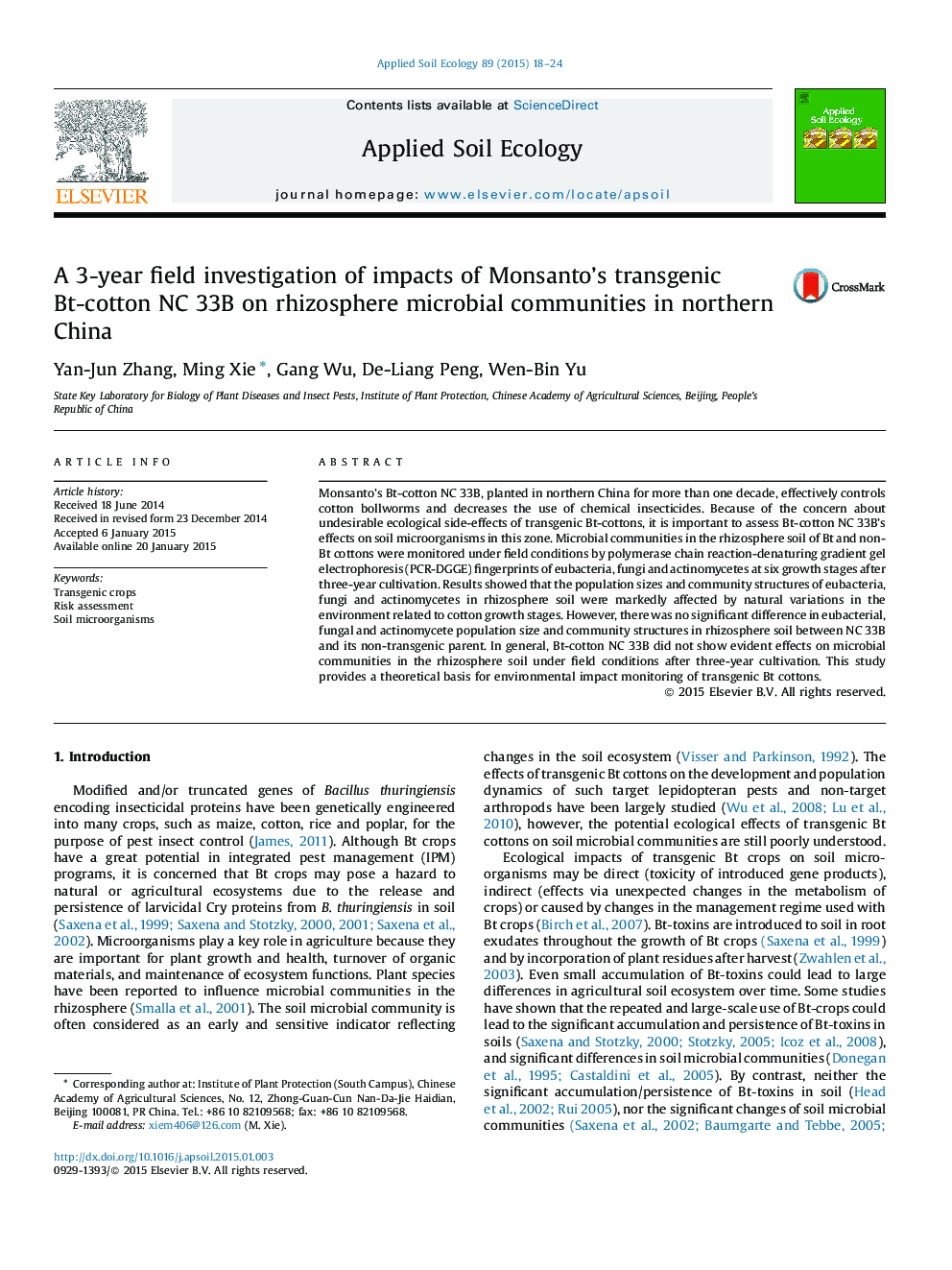| کد مقاله | کد نشریه | سال انتشار | مقاله انگلیسی | نسخه تمام متن |
|---|---|---|---|---|
| 4382027 | 1617794 | 2015 | 7 صفحه PDF | دانلود رایگان |

• Changes of microbial communities by Bt-gene were not greater than those of cultivar.
• The microbial communities was markedly affected by the plant growth stage.
• Bt-cotton did not show evident effects on soil microbial communities after 3 years.
Monsanto’s Bt-cotton NC 33B, planted in northern China for more than one decade, effectively controls cotton bollworms and decreases the use of chemical insecticides. Because of the concern about undesirable ecological side-effects of transgenic Bt-cottons, it is important to assess Bt-cotton NC 33B’s effects on soil microorganisms in this zone. Microbial communities in the rhizosphere soil of Bt and non-Bt cottons were monitored under field conditions by polymerase chain reaction-denaturing gradient gel electrophoresis (PCR-DGGE) fingerprints of eubacteria, fungi and actinomycetes at six growth stages after three-year cultivation. Results showed that the population sizes and community structures of eubacteria, fungi and actinomycetes in rhizosphere soil were markedly affected by natural variations in the environment related to cotton growth stages. However, there was no significant difference in eubacterial, fungal and actinomycete population size and community structures in rhizosphere soil between NC 33B and its non-transgenic parent. In general, Bt-cotton NC 33B did not show evident effects on microbial communities in the rhizosphere soil under field conditions after three-year cultivation. This study provides a theoretical basis for environmental impact monitoring of transgenic Bt cottons.
Journal: Applied Soil Ecology - Volume 89, May 2015, Pages 18–24